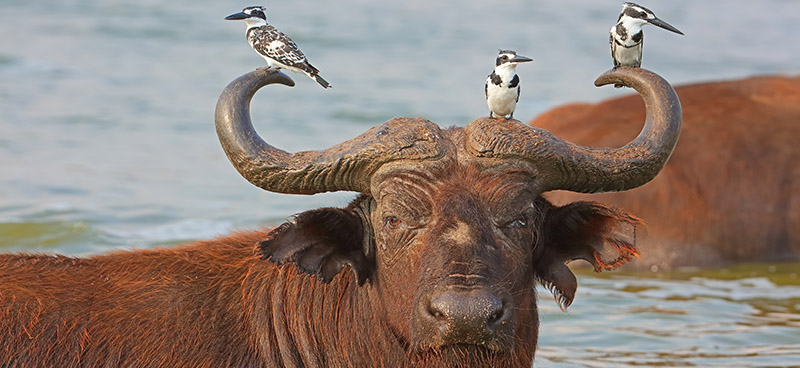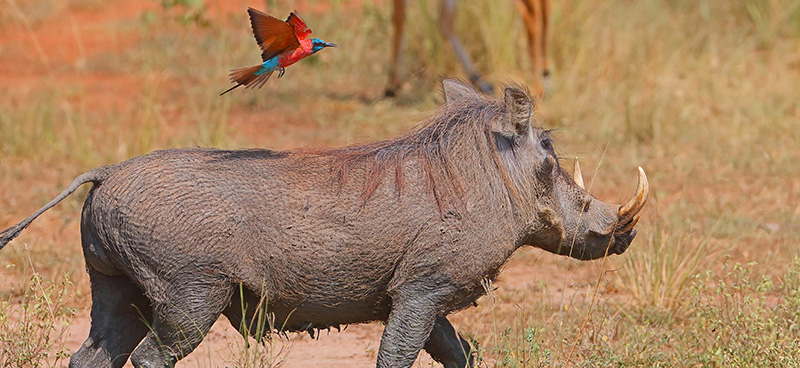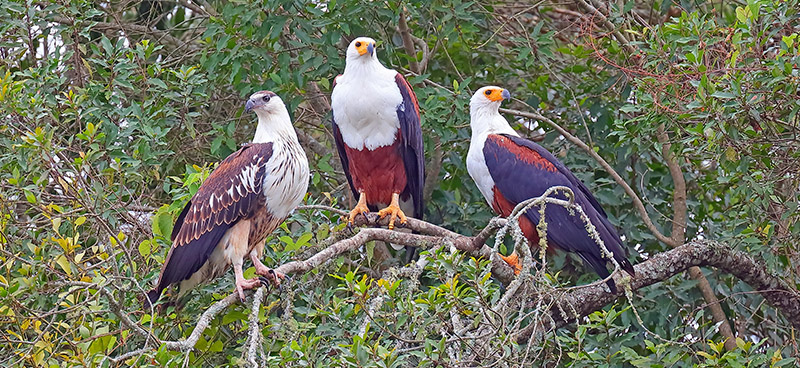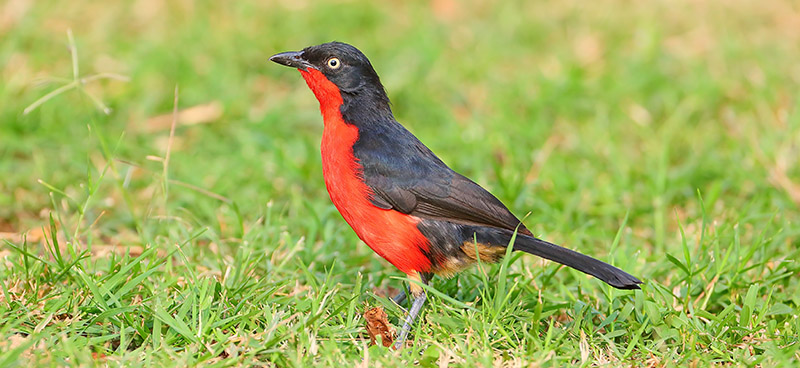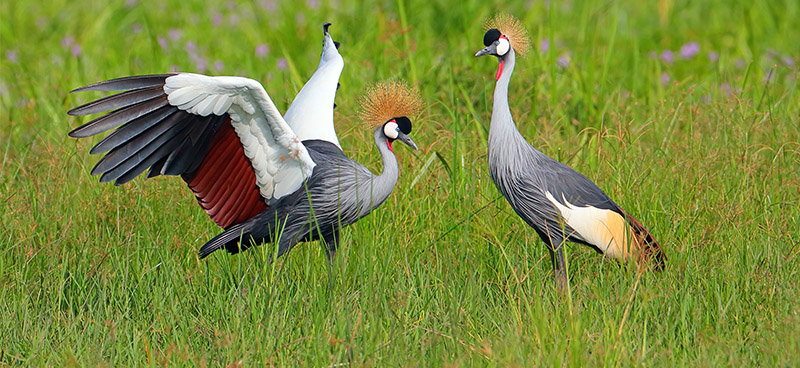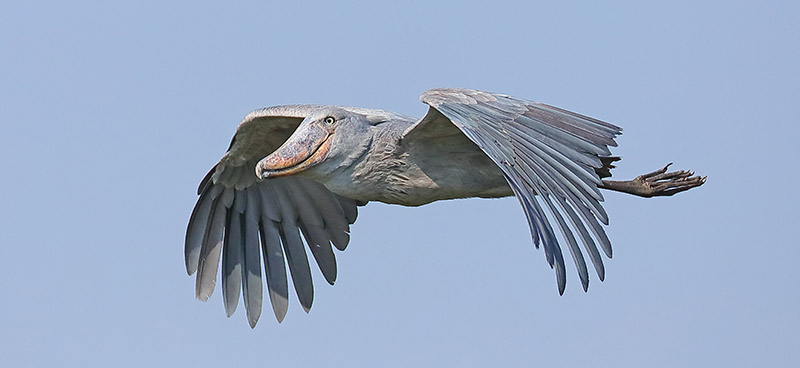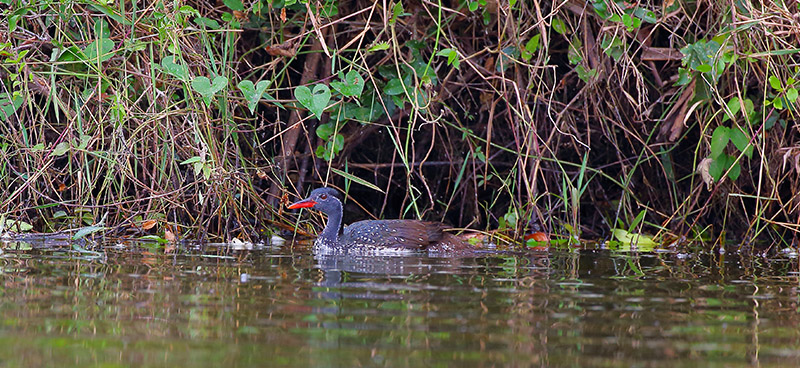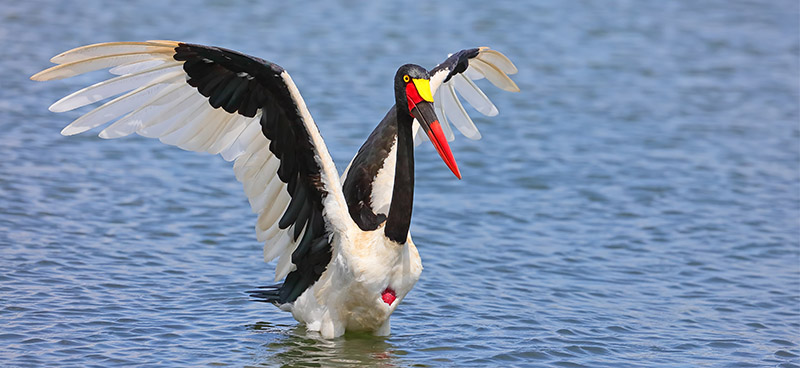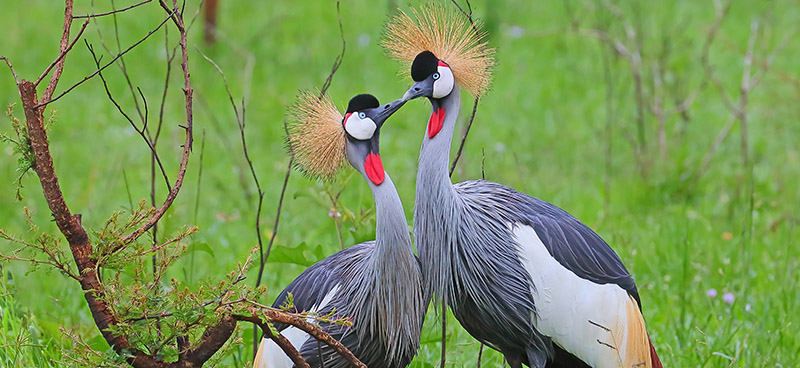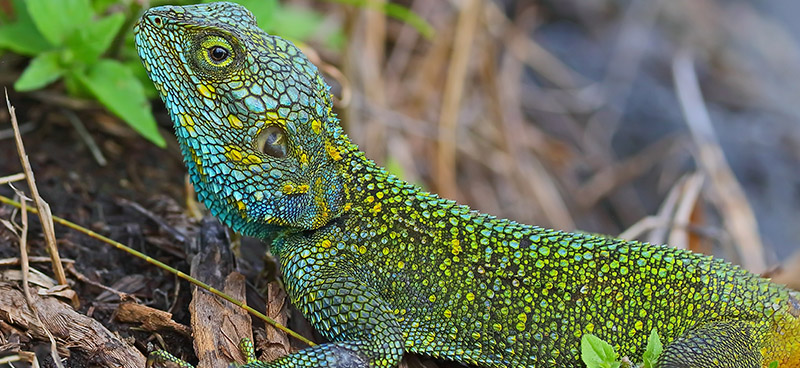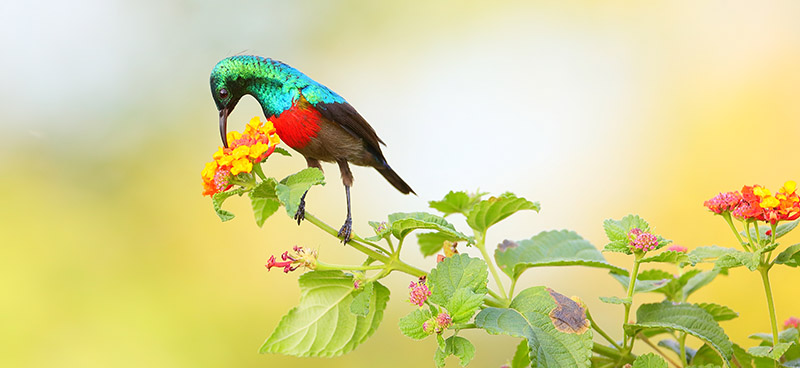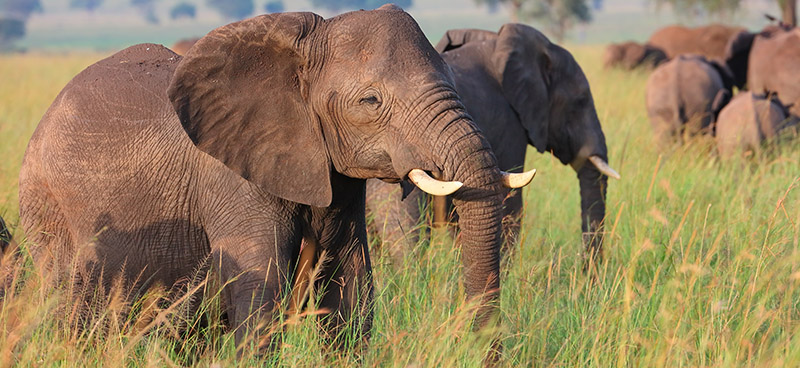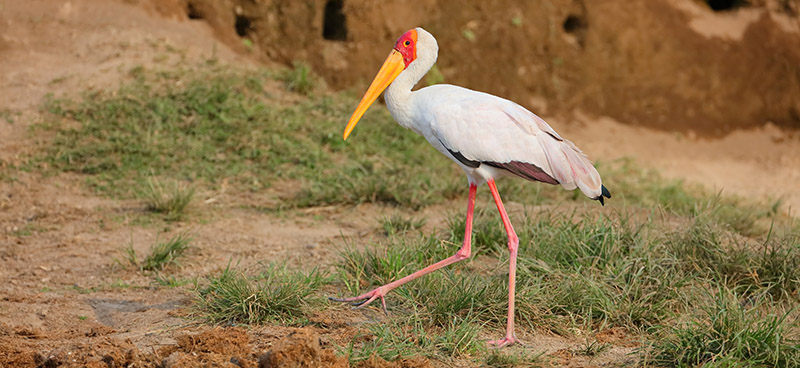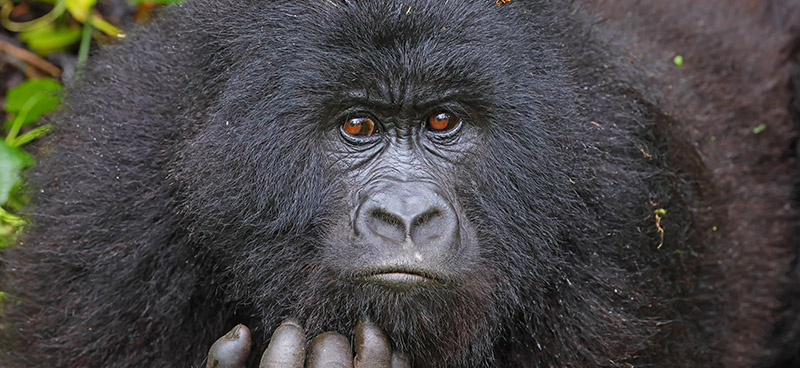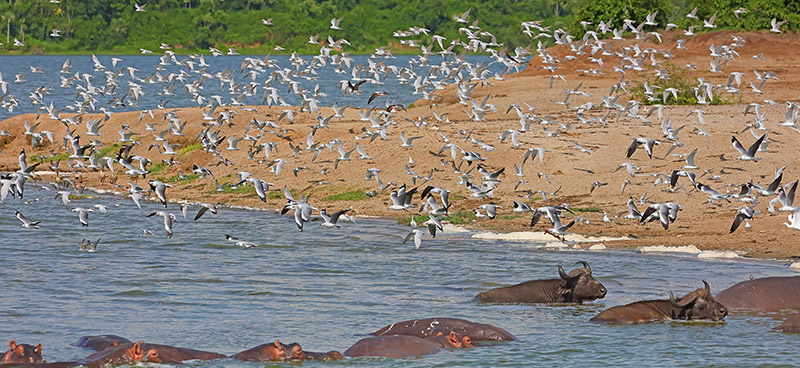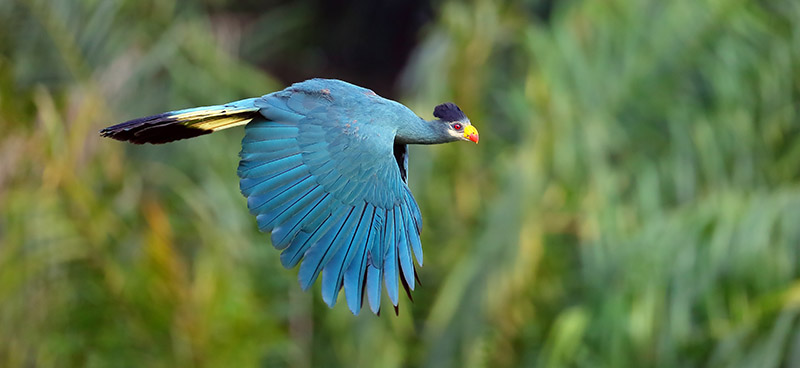EXPEDITION HIGHLIGHTS
3rd May-7th June 2018
*Visit all of Uganda’s top National Parks—Kidepo Vallley, Murchison Falls, Lake Mburo, Queen Elizabeth, Bwindi Impenetrable and more!
*Marvel at the stunningly beautiful landscape below you as you fly in comfort between some parks on our private charters, landing on national park airstrips and saving a lot of time that will be used more wisely wildlife-viewing instead of in traffic.
*Stay at world class Apoka Lodge, one of Africa’s finest lodges, at Kidepo Valley National Park, among the most amazing and least visited national parks of Uganda
*View and photograph the world’s largest bird, Ostrich, in addition to the amazing Secretary Bird and more at Kidepo Valley National Park
*Explore by land and water Mabamba Swamp RAMSAR reserve by boat, home of the otherworldly Shoebill, which is one of Uganda’s top five birds!
*Close-up viewing and photography of large predators—African Lions, Spotted Hyena, Cheetah, Leopard, Shoebill, Crowned Eagle, African Fish-Eagle and Secretary Bird and more! All very real possibilities on this excursion!
*Large concentrations of waterbirds, Nile Crocodiles, African Elephants and Cape Buffalo by boat, at Kazinga channel, Queen Elizabeth National Park
*Visit the source of the Albert Nile at Murchison Falls National Park
*Visit Bwindi Impenetrable & Kibale National Parks for both Mountain Gorilla and Chimpanzee trekking
*Closeup viewing and likely photography of African Finfoot, African Fish-Eagle, Goliath Heron, and Malachite Kingfisher juxtaposed with large concentrations of Hippopotamus at Lake Mburo National Park
*Pursue localized Albertine Rift Endemics and Crowned Eagles amid the refreshingly spring-like climate prevailing in the highlands of Bwindi Impenetrable National Park
ABOUT UGANDA:
Home to nearly 1,100 bird species, representing more than 42% of the 2600+ species recorded in Africa, Uganda is one of the top birding destinations on the continent. Some even consider it the richest African birding destination….
Kenya, Tanzania and the DRC are also home to over a thousand bird species, but they are much larger than Uganda, so require several trips to see as many birds as can be seen on this one NATURAL ENCOUNTERS Ugandan itinerary.
Consider this: At a little over 240,000 square kilometers, Uganda is slightly smaller than the US State of Oregon, or a little larger than the UK, so covering a large percentage of its important bird areas and biomes in a reasonable timeframe is possible on one trip.
Safer than some surrounding East and Central African countries, Uganda is currently by far the best destination to pursue such top birds as the iconic Shoebill, in addition to an impressive constellation of Albertine Rift endemics that are difficult or impossible to see anywhere else.
The country is so bird rich that even casual birding tours regularly exceed 300 species on a two-week tour, and some have approached the 700 mark in three weeks.
Part of the reason for this incredible claim is that Uganda is the only East African country that supports extensive tracts of all major habitats found in sub-Saharan Africa, exclusive of coastal habitats… but the fact that it borders Lake Victoria makes up for this and helps to even the birding score.
The country is also the most friendly and affordable nation in East Africa for eco travel. It’s easy to combine birding with large mammal viewing as you discover Uganda’s wonderful natural delights, and the country has prioritized ecotourism, so the Safari Lodges are of very high standard. For instance, Kidepo Valley National Park’s Apoka Lodge has achieved international and is considered one of the top ten lodges in Africa!
With the best chances in Africa to see the prehistoric-looking Shoebill, or to view impressive constellations of large mammals while on safari—including Mountain Gorillas, which you wont find in any zoo—at close range, the sky really is the limit when it comes to birding and wildlife-viewing in Uganda!
Even though Uganda is an Equatorial country, the weather is usually remarkably mild and not that humid! We’ll have the fortuitous opportunity of crossing the Equator at least twice on this exceptional excursion! A monument marks the spot.
NATURAL ENCOUNTERS BIRDING & WILDLIFE PHOTOGRAPHY TOURS & BIRD UGANDA SAFARIS’ CONCISE 2018 ITINERARY OVERVIEW:
The tour begins and ends in Entebbe on the shores of Lake Victoria, Africa’s largest lake. The trip is very diverse and visits most of the important National Parks around the country.
True to form, this Natural Encounters excursion has an ambitious plan at an enjoyable pace.
Our first morning, following arrival at Entebbe the day before, we will set out straight away to find what is considered perhaps the most iconic bird of the tour—Shoebill!
We’ll spend a morning in the Mabamba Wetlands RAMSAR reserve before heading northwest to beautiful Murchison Falls National Park, one of the best parks in Uganda for seeing and photographing large mammal concentrations—Ugandan Kob, Hippopotamus, Rothchild’s Giraffe, African Elephant, African Lion, Spotted Hyena, Leopard and more.
From here we work further south to the Kibale National Park, perhaps the best area in East Africa for primate viewing and photograph. At Kibale we will have the fortuitous opportunity of Chimpanzee trekking, as well as rainforest birding in an extensive tropical forest where we will search for rare species to observe and photograph.
Next on the roster is wonderful Queen Elizabeth National Park. A highlight of our stay at “Queen”, as it is called by local Ugandan guides, is to cruise the Kazinga Channel, by double-decker boat, enabling us to closely, safely and ethically approach large concentrations of waterbirds and large mammals wading and wallowing in the channel.
The Kazinga Channel links Lakes George and Edward, and is one of the most productive places in Uganda for birding and photography excursions!
Lake Mburo National Park offers one of the best chances to see and photograph the otherwise difficult to see African Darter.
Bwindi Impenetrable National houses more than half the world’s 800 or so Mountain Gorillas, and is a part of the Albertine Rift highlands, with several Rwenzori Mountain endemics readily seen in addition to Crowned Eagle, Black Bee-eater, and Black-tailed (Mountain) Oriole, etc.
Accommodations are excellent throughout this itinerary, and our co-leader, Herbert Byaruhanga, is one of the more experienced local guides in Uganda. All in all—a trip of a lifetime!
DAY 1 ARRIVE ENTEBBE, UGANDA; AFTERNOON BIRDING AT ENTEBBE BOTANIC GARDENS:
Lodging Lake View Hotel, above Lake Victoria, Entebbe:
Most international flights coming North America, via Europe, Asia or the Middle East, arrive at Entebbe in the evening.
After passing through friendly Ugandan Customs you will be received at the Entebbe International Airport by our cheerful Ugandan team and comfortably taken to the new, nearby, and very high standard, Lake View Hotel, located in a safe, quiet neighborhood that is nestled atop a knoll overlooking Lake Victoria.
Our morning will be spent at leisure, in order to allow you to be well rested before starting our exciting Ugandan birding and wildlife-viewing odyssey.
After lunch, we will do some local birding and wildlife photography at nearby, always productive, safe and enjoyable, Entebbe Botanic Gardens, which is located on the shores of Lake Victoria, just 10 a minute drive from out hotel.
WHAT TO EXPECT:
After an early breakfast, we will take a short drive to Bwindi’s Park Headquarters and meet with our excellent, professional park guides and trackers, who will give an animated but important dissertation on the etiquette of gorilla trekking. Only then will we will learn which troop of “habituated” Mountain Gorillas we have been assigned to, as no troop can be reserved.
Following this dissertation, we then embark on an adventurous and scenic drive of between 30-minutes and 2-hours (usually under an hour) through a patchwork of cultivated lands, luxuriant montane rainforest, and rural African villages, typical of Bwindi’s highlands, to a strategic trailhead, where we will meet with and chose our porters (porters are gratis, c/of Natural Encounters Birding and Wildlife Phototraphy Tours/ Bird Ugand Safaris).
Your friendly, personal porters will gently assist you as the trail grades between cultivated land into near pristine rainforest, while also carrying your daypack, water, and any other unnecessarily burdensome portage—freeing you to enjoy your hike, observe birds and wildlife en route, and to just immerse yourself in the beautiful experience of being in the same habitat inhabited by half the world’s population of magnificent Mountain Gorillas!
Note: We will not have time for bird photography during the trek, so just enjoy your surroundings. Once we reach our assigned troop of Mountain Gorillas, we will then have between one and one and a half hours (strictly controlled by the Park Service, for the gorilla’s benefit) to observe, photograph and thrill to the sight of these great primates.
Also, since Natural Encounters Birding Tours limits the number of participants to no more than 6-8, if we have less than 8 participants, we may be joined by other wildlife enthusiasts on the trek. We have no control over this, since only Bwindi Impenetrable National Park officials stipulate the size of each daily gorilla trekking group. You will not be disappointed.
We will walk into the forest where the gorillas were seen the night before and start tracking from that point. Park Ranger-Guides will be in radio contact with special trackers, who were already in the forest ahead of our arrival…and together they will coordinate our trajectory to lead us directly to the gorillas.
The trekking can take between 1 and 6 hours and you will be walking at altitudes of between 1,600 m and 2,607 m (5,249’-8,530’). The terrain may be rough and at times muddy, and this is where your attentive and kindly porters will prove their worth.
Although the hike can be physically demanding, the beauty of the forest and surrounding scenery make the trekking worthwhile and, as mentioned, your personal porter(s), attentively carry your daypack and intuitively assist you (if needed) as you negotiate the trail.
Once the gorillas are located, any fatigue is soon forgotten, as the experience is often described as being “the most profound natural history experience of a lifetime”!
Picnic lunches are provided and it is important to take plenty of water. Cameras, extra charged batteries, and plenty of CF cards are recommended.
Be aware that meteorological conditions can change at the drop of a hat in the mountains of Uganda, and it can rain (sometimes hard) at any time, hence the recommendation in our packing list that you bring waterproof clothing, garden gloves (to protect your hands from any nettles or ants, as you may at times find it necessary to grip understory vines, shrubs and roots, while on the trail).
Large, heavy-duty, 30-gallon garbage and Zip lock bags are highly recommended to protect your cameras and optical gear.
As far as birding is concerned, Bwindi Impenetrable National Park provides excellent forest birding that ranks among the best in Uganda, with 23 highly localised Albertine Rift endemics present, and we will do our best to see and photograph a representative sample of them during our stay.
DAY 2 MABAMBA WETLANDS RESERVE IMPORTANT BIRD AREA (IBA):
Lodging at Lake View Hotel, Lake Victoria, Entebbe:
After an early breakfast (we may opt to bring a boxed breakfast), we will set out to the nearby Mabamba Wetlands on the shores of Lake Victoria (approximately 1.5 hours drive, via the Lake Victoria Ferry).
Mabamba Wetlands Reserve is one of the few remaining, extensive papyrus swamps in the country protected by local communities and is designated as both a Ramsar site of international importance and an IBA.
With its labyrinth of channels and lagoons, Mabamba is home to several pairs of Shoebills, Uganda’s most famous avian resident. This charismatic monotypic species is certainly among the most sought-after birds in Africa, and we’ll make special efforts today to find it with the help of our local boatmen-guides, who will silently paddle us through the swampy glades and channels by boat.
There will of course be a good selection of classic East African water birds present at Mabamba, including Pink-backed Pelican; Long-tailed Cormorant; Goliath Heron; African Open-billed Stork, Saddle-billed and Marabou storks; Hammerkop; White-backed Duck, White-faced Whistling- and Yellow-billed ducks; African Fish-Eagle, African Marsh-Harrier; African Water Rail, Purple Swamphen and Allen’s Gallinule; African Jacana; Long-toed and Spur-winged plovers, etc.
Apart from the numerous water birds, we are likely to see a nice variety of open country birds , perhaps including Speckled and African Green pigeons; Eastern Plantain-eater; Malachite, Giant, and Pied kingfishers; Blue-headed Coucal; Blue-breasted Bee-eater; Crowned Hornbill; Angola and Rufous-chested swallows; Winding Cisticola; Greater and Lesser swamp-warblers; Papyrus Yellow Warbler; Swamp Flycatcher; Scarlet-chested Sunbird; Papyrus Gonolek; Slender-billed, Northern Brown-throated, and Golden-backed weavers; and Papyrus Canary, to name but a few of the possibilities.
DAYS 3-5 KIDEPO VALLEY NATIONAL PARK:
Flight Entebbe—Kidepo Valley National Park Airstrip.
Lodging at World Class Apoka Lodge:
This morning we board our private charter and fly in comfort to Kidepo Valley National Park, where during the less than two hour flight, we’ll have the fortuitous opportunity of seeing a wide swath of Uganda and the beautiful Kidepo natural preserve from an aerial perspective.
Kidepo Valley National park is one the best wildlife parks in Africa, replete with very beautiful panoramic vistas throughout. The incredible Apoka Lodge features a delightful panoramic restaurant, an inviting swimming pool and is located on a large promontory offering an excellent vantage point overlooking two adjacent waterholes, so mammals and birds come and go at their whim while we watch. Very exciting and authentic!
During out stay at this seldom-visited national park, we will experience morning, afternoon and some nocturnal game drives in high standard, high clearance, open air 4WD safari vehicles, returning to the lodge for most meals, although
Keystone East African mammals present here include Cheetah, African Lion, Giant Pangolin, Oribi, Rothchild’s Giraffe, Defassa Waterbuck, the Guarnter Dik-dik, Jackson’s Hartebeest, herds of Cape Buffalo (the biggest herds our co-leader Herbert has ever seen), in addition to Side-striped Jackal, Warthog, Zebra, Patas Monkey, Olive Baboon, African Elephant and Bohor Reedbuck, in addition to many other east African mammals.
Mammals aside, according to the 2014 Uganda Bird Guides Club members, Kidepo is the best savanna birding hotspot in Uganda, and because open savannas predominate, most of the birds can be seen in the open!
Birds here include, Common Ostrich; Secretary Bird, African Swallow-tailed Kite, Eastern Pale Chanting Goshawk, Pygmy Falcon and Fox Kestrel; Stone Partridge, Clapperton’s and Heuglin’s francolins, Yellow-necked Spurfowl; Kori, White-bellied and Hartlaub’s bustards; Violet-tipped Courser; Black-headed Plover; Four-banded Sand Grouse; Bruce’s Green Pigeon; Rose-ringed Paraakeet; White-crested Turaco and White-bellied Go-away bird; White-faced Scoops Owl; Long-tailed and Standard-winged nightjars; Little Green Bee-eater; Abyssinian and Rufous-crowned Rollers; Abyssinian Ground, Eastern Yellow-billed and Jackson’s hornbills; Red-fronted and Black-breasted barbets; Brown-backed Woodpecker; Singing Bush lark, Red-winged Lark; Ethiopian Swallow; Pied, Isabelline and Heuglin’s wheatears; African Grey Flycatcher; Foxy and Red Pate cisticolas; Karamoja Apalis; White-bellied Tit and Mouse-colored Penduline Tit; Northern White-crowned and Yellow-billed Shrikes; Slate-colored Boubou, Fan-tailed Raven; Superb Starling; Red billed Oxpecker; Eastern Violet-backed, Pygmy and Beautiful sunbirds; Rufous-and-Chestnut Sparrow; Yellow-spotted Petronia; White-headed and White-billed buffalo-weavers; White-browed and Chestnut-crowned Buffalo-Weaver; Grey-capped, Social and Speckle-fronted weavers; the Green-winged, Orange-winged and Red-winged pytilias; Black-bellied and Black-faced waxbills; Steel-blue, Pin-tailed and Straw-tailed whydahs; Cut-throat Finch and Brown-rumped Bunting, etc.
The list goes on and these are just a few of the 480 bird species recorded at this spectacular Ugandan park.
DAYS 6-8 MURCHISON FALLS NATIONAL PARK:
Board our private charter back to Entebbe then drive to Murchison Falls National Park.
Lodging at Paraa Safari Lodge within the park.
Today we will drive from Entebbe to and through Uganda’s bustling Capital City of Kampala to reach the very fine Paraa Safari Lodge, Murchison Falls National Park.
Paraa has all the amenities—an excellent and lovely restaurant, refreshing pool, bar and pool-bar, satellite television, excellent showers, etc. yet it is located on a wild bluff overlooking the Albert Nile within Murchison Falls National Park. Of all the lodges in the vicinity of Murchison, Paraa is the most conveniently located for efficient access to both boats on the River Nile and the parks extensive matrix of exciting Safari tracks.
Our days will include ample riverine explorations on the Nile (crepuscular morning, afternoon and evening spotlighting), with at least one excursion downstream to Lake Albert, and upstream to marvel at the gorge of Murchison falls, itself, in addition to exciting day and night safari drives to access all habits—savanna, lakeshore, and woodland—in the park.
Murchison Falls National Park is Uganda’s largest national park (3,893 sq. km.) and protects an impressive section of untamed savannah bisected by the mighty River Nile. It is named for the dramatic Murchison Falls where the world’s longest river explodes violently through a narrow cleft in the Rift Valley escarpment to plunge into a frothing pool 43m below.
This is one of Uganda’s oldest conservation areas, formed in the early 1900s. The park is perhaps Uganda’s premier game park, with no fewer than 76 mammal species, including African Lion, African Elephant, Leopard, Hippopotamus, Rothschild Giraffe, Cape Buffalo, Jackson’s Hartebeest, Oribi, Warthog, and Uganda Kob, etc.
The park also hosts 360+ recorded bird species including the rare Shoebill (in the unlikely event that we somehow have not seen one by now). We’ll have the better portion of two days to bird and photograph the variety of wildlife inhabiting the myriad habitats at Murchison.
Some of the many bird species we’ll look for here include African Darter; Goliath Heron; Saddle-billed Stork; White-faced Whistling-Duck; Egyptian Goose; Knob-billed Duck; African Cuckoo-Hawk, Bateleur, Bat Hawk, Black-chested, Brown, and Banded snake-eagles; Dark-chanting Goshawk; Red-necked Falcon; Crested and Heuglin’s Francolins; African Finfoot; Stanley and Black-bellied Bustards; Senegal and Spotted Thick-knees; Rock Pratincole; Black-headed and Wattled Lapwings; Vinaceous Dove, Black-billed Wood-dove, Bruce’s Green-Pigeon; Red-headed Lovebird; White-crested Turaco; Levaillant’s and Black cuckoos; Blue-headed, Senegal, and White-browed coucals; Spotted and Gray eagle-owls; Rwenzori, Long-tailed, Square-tailed, and Pennant-winged nightjars; Blue-naped Mousebird; Gray-headed and Pied Kingfishers; Red-throated, Blue-breasted, Swallow-tailed, and Northern Carmine bee-eaters; Broad-billed Roller; African Gray and Abyssinian ground- hornbills; Spot-flanked and Black-billed barbets; Nubian and Brown-backed woodpeckers; Wire-tailed Swallow; African Pipit; Singing, Rattling, Croaking, Siffling, and Zitting cisticolas; Red-and-gray Warbler, White-winged Scrub-Warbler, Green-backed Eremomela, and Uganda Wood-Warbler; Silverbird; Pale Flycatcher, Lead-colored Flycatcher, and Snowy-crowned Robin-Chat; Spotted Morning-Thrush; White-fronted Black-Chat; Blue-throated Wattle-eye; Black-headed Batis; White-shouldered Black-tit; Green-backed, Beautiful, and Copper sunbirds; Gray-backed Fiscal, Yellow-billed Shrike, Brubru, Northern Puffback, Sulphur-breasted and Gray-headed bushshrikes, and White Helmet-shrike; Lesser Blue-eared and Violet-backed Starlings; Speckle-fronted, Little, and Vitelline Masked weavers; Cardinal, Red-headed, and Red-billed queleas; Orange Bishop and Yellow-shouldered Widowbird; Bar-breasted and Black-bellied firefinches; Black-faced Quailfinch; Pin-tailed Whydah; Brown-rumped and Cabanis’s buntings; and Shelly’s Rufous Sparrow.
DAYS 9-10 CHIMP TREKKING & BIRDING AT KIBALE NATIONAL PARK:
Lodging at scenic Ndali Lodge, perched above a crater lake near Kibale National Park (or similar):
Extensive Kibale National Park protects a large block of rainforest that offers both excellent birding, and one of the best opportunities to see and photograph our closest primate relative, the Chimpanzee, in the wild. Several Chimpanzee troops are “habituated” to the presence of humans, so they behave naturally, without fear, and are sometimes seen walking in a bipedal position along the same trails we will be traversing! It’s an unforgettable sight, once in a lifetime experience you will bot soon forget!
Chimpanzees aside, the park probably has the greatest variety and concentration of primates found anywhere in East Africa, and is famous for both Chimpanzees and forest bird diversity!
Examples of primates easily seen at Kibale are—Common Chimpanzee, Uganda Gray Mangabey, Ugandan Red Colobus, L’Hoest’s Monkey, Black-and-white Colobus, Blue Monkey and Olive Baboon.
Superb birding and primate watching, combined with easy access, excellent infrastructure and top of the line local guides, makes any visit to Kibale a can’t miss highlight of our Uganda Wildlife and Birding Safari!
At Kibale, forest birding is the name of the game! Some of the many avian species we will look for around Kibale (and possibly the nearby Bigodi Wetlands Reserve), include African Crowned-Eagle; White-spotted Flufftail; Red-winged Francolin; African Emerald, Dusky Long-tailed and Red-chested cuckoos; Yellowbill (or Blue Malkoha); Black-billed Turaco; Narina Trogon; Blue-breasted Kingfisher; Black Bee-eater, White-throated bee-eater; White-headed Wood-Hoopoe; Speckled, Yellow-rumped, and Yellow-throated tinkerbirds; Streaky-throated (split from Hairy-breasted), Yellow-billed and Yellow-spotted barbets; African (Green-breasted) Pitta; Grey-winged and Snowy-headed robin-chats; African Broadbill; Willcock’s & Thick-billed honeyguides; Cassin’s Gray Flycatcher; White-headed Saw-wing; Mountain Wagtail; Velvet-mantled Drongo; Petit’s Cuckoo-Shrike; Joyful & Honeyguide greenbuls; Brown and Scaly-breasted illadopses; both Banded and White-chinned prinias; Masked and Buff-throated apalises; Grey-throated and Black-and-white flycatchers; Red-bellied Paraadise Flycatcher; Pink-footed Puff-back; Chestnut-winged and Purple-headed starlings; Superb, Green-headed & Green-throated sunbirds; Dark-backed Weaver, Vieillot’s Black Weaver; Red-headed Malimbe; Gray-headed Negrofinch; and Black-crowned Waxbill, in addition to many other forest birding delights.
DAYS 11-13 QUEEN ELIZABETH NATIONAL PARK (WITH TWO FULL DAYS OF BIRDING, EXPLORING THE KAZINGA CHANNEL & EXCITING GAME DRIVES):
Lodging at Mweya Safari Lodge, Queen Elizabeth National Park:
Today, we will start early after breakfast at Ndali Lodge and drive to Queen Elizabeth National Park. Our route to the park will be determined by road conditions, either passing through its Ishasha sector—world-renowned for its tree-climbing lions—or, alternatively, we’ll drive through the beautifully scenic Rukungiri district.
The park, which is named after Queen Elizabeth, who visited here in 1954, is the second largest national park in Uganda, and ranks highest of all the country’s national parks with respect to overall species diversity. Its bird list exceeds the 600 mark!
We’ll explore a mosaic of habitats while here, ranging from moist forest at Maramagambo to wild savanna, at Ishasha—excellent for African Lion, Leopard, African Elephant, Spotted Hyenas, Ugandan Kob, Side-striped Jackal, Olive Baboon, and Giant Forest Hog, just to name a few.
While at the park we’ll partake in exciting and adventurous game drives, day and night, in addition to partaking in at least two boat excursions on the Kazinga Channel (one in the morning and one in the afternoon), which is one of the greatest wildlife watcher’s thrills in all Africa.
The Kazinga Channel—a comparatively narrow, 32 kilometer long strait linking Lakes George and Albert—is one of the best places to look for African Skimmer and other aquatic birds, including Great White and Pink-backed pelicans; Grey, Purple and Goliath Herons; Saddle-billed and Yellow-billed storks; Sacred and Glossy ibises; African Spoonbill; Egyptian Goose; African Black Crake; African Jacana; Black-winged Stilt; Water Thick-knee; Spur-winged, African Wattled, Kittlitz’s, and Three-banded plovers; Collared Pratincole; Malachite and African Pygmy kingfishers; Brown-throated Sand martins; Greater and Lesser swamp warblers; Carruthers’s Cisticola, and Papyrus Gonolek, etc.
Other interesting species found at Queen Elizabeth National Park, particularly during the game drives, include Black-rumped Button-Quail; African Black Crake; Brown-chested Plover; Temminck’s Courser; Verreaux’s Eagle-Owl; Black Bee-eater; Shining Blue and Gray-headed kingfishers; White-tailed Lark, as well as Marabou Stork; Hooded, African White-backed, Rüppell’s Griffon, Lappet-faced and White- headed vultures; Black-shouldered Kite, Brown Snake Eagle, Bateleur, Gabar Goshawk, Wahlberg’s, Tawny, Martial and Long-crested eagles; Lanner Falcon; Helmeted Guineafowl; Black-bellied Bustard; Red-necked Spurfowl; Senegal and Crowned plovers; African Mourning, Ring-necked and Laughing doves; Diederik Cuckoo; Black and Senegal coucals; Speckled Mousbird, Blue-naped Mousebird; Madagascar and Little bee-eaters; African Hoopoe; Common Scimitarbill; Yellow-fronted Tinkerbird; White-headed Barbet; Lesser Honeyguide; Grey Woodpecker; Rufous-naped and Flappet larks; Yellow-throated Longclaw; Plain-backed Pipit; Banded Martin; White-browed Robin-Chat; Sooty Chat;Arrow-marked and Black-lored babblers; Mustached Grass Warbler, Fan-tailed
Grassbird; Trilling, Winding, Stout and Zitting cisticolas; Northern Crombec; Buff-bellied Warbler; Black-headed Batis; Common Wattle-eye, and African Paraadise Flycatcher, etc
DAY 14 SCENIC OVERLAND DRIVE BETWEEN QUEEN ELIZABETH NATIONAL PARK AND UNESCO’S BWINDI IMPENETRABLE NATIONAL PARK—WITH A GAME DRIVE EN ROUTE.
This morning, after breakfast, we’ll embark on a scenic, overland excursion to Bwindi Impenetrable National Park, home of the Mountain Gorilla, arriving at our lovely lodge in either the middle-elevated Buhoma Sector or the upper-elevated Ruhija Sector, in anticipation of what has come to be the highlight of any trip to Uganda-Mountain Gorilla Trekking!
BWINDI IMPENETRABLE NATIONAL PARK MOUNTAIN GORILLA TREKKING WITH ALBERTINE RIFT ENDEMICS:
Lodging at one of the many excellent, luxury gorilla lodges, such as Buhoma Sector or Gorilla Mist, Ruhija Sector, in the
Bwindi Impenetrable National Park extends over a magnificent verdant swathe of mountains rising above the Albertine Rift Valley. The ancient montane rainforest within—one of the few in Africa to have flourished throughout the last Ice Age—is home to roughly half of the world’s 800+ endangered Mountain Gorillas, with a number of troops habituated to the presence of human visitors.
With that fact in mind, you will likely be among the lucky few to see and photography these keystone giant primates, with the help of our friendly and attentive professional porters (two per person, c/o Natural Encounters Birding & Wildlife Photography Tours)! They are wild animals, so no sighting is guaranteed, but we have never missed encountering them on any Natural Encounters excursion!
The national park has 90 mammal species, including 11 primates, and over 300 recorded bird species.
DAYS 15-16 TWO ADVENTURE-FILLED DAYS OF UNFORGETTABLE GORILLA TREKKING & BIRDING FOR ALBERTINE RIFT ENDEMICS AT BWINDI IMPENETRABLE NATIONAL PARK:
Looking deep into the expressive brown eyes of these gentle giants is surely the most exciting and poignant wildlife encounter that Africa has to offer. Bwindi’s broader biodiversity, a result of its antiquity and an altitude span of 1,160 m to 2,607 m.
WHAT TO EXPECT:
After an early breakfast, we will take a short drive to Bwindi’s Park Headquarters and meet with our excellent, professional park guides and trackers, who will give an animated but important dissertation on the etiquette of gorilla trekking. Only then will we will learn which troop of “habituated” Mountain Gorillas we have been assigned to, as no troop can be reserved.
Following this dissertation, we then embark on an adventurous and scenic drive of between 30-minutes and 2-hours (usually under an hour) through a patchwork of cultivated lands, luxuriant montane rainforest, and rural African villages, typical of Bwindi’s highlands, to a strategic trailhead, where we will meet with and chose our porters (porters are gratis, c/of Natural Encounters Birding and Wildlife Phototraphy Tours/ Bird Ugand Safaris).
Your friendly, personal porters will gently assist you as the trail grades between cultivated land into near pristine rainforest, while also carrying your daypack, water, and any other unnecessarily burdensome portage—freeing you to enjoy your hike, observe birds and wildlife en route, and to just immerse yourself in the beautiful experience of being in the same habitat inhabited by half the world’s population of magnificent Mountain Gorillas!
Note: We will not have time for bird photography during the trek, so just enjoy your surroundings. Once we reach our assigned troop of Mountain Gorillas, we will then have between one and one and a half hours (strictly controlled by the Park Service, for the gorilla’s benefit) to observe, photograph and thrill to the sight of these great primates.
Also, since Natural Encounters Birding Tours limits the number of participants to no more than 6-8, if we have less than 8 participants, we may be joined by other wildlife enthusiasts on the trek. We have no control over this, since only Bwindi Impenetrable National Park officials stipulate the size of each daily gorilla trekking group. You will not be disappointed.
We will walk into the forest where the gorillas were seen the night before and start tracking from that point. Park Ranger-Guides will be in radio contact with special trackers, who were already in the forest ahead of our arrival…and together they will coordinate our trajectory to lead us directly to the gorillas.
The trekking can take between 1 and 6 hours and you will be walking at altitudes of between 1,600 m and 2,607 m (5,249’-8,530’). The terrain may be rough and at times muddy, and this is where your attentive and kindly porters will prove their worth.
Although the hike can be physically demanding, the beauty of the forest and surrounding scenery make the trekking worthwhile and, as mentioned, your personal porter(s), attentively carry your daypack and intuitively assist you (if needed) as you negotiate the trail.
Once the gorillas are located, any fatigue is soon forgotten, as the experience is often described as being “the most profound natural history experience of a lifetime”!
Picnic lunches are provided and it is important to take plenty of water. Cameras, extra charged batteries, and plenty of CF cards are recommended.
Be aware that meteorological conditions can change at the drop of a hat in the mountains of Uganda, and it can rain (sometimes hard) at any time, hence the recommendation in our packing list that you bring waterproof clothing, garden gloves (to protect your hands from any nettles or ants, as you may at times find it necessary to grip understory vines, shrubs and roots, while on the trail).
Large, heavy-duty, 30-gallon garbage and Zip lock bags are highly recommended to protect your cameras and optical gear.
As far as birding is concerned, Bwindi Impenetrable National Park provides excellent forest birding that ranks among the best in Uganda, with 23 highly localised Albertine Rift endemics present, and we will do our best to see and photograph a representative sample of them during our stay.
DAY 17 SCENIC DRIVE BETWEEN BWINDI IMPENETRABLE NATIONAL PARK AND LAKE MBURO NATIONAL PARK:
Lodging at the remarkably posh and incredibly scenic Montana Tented Camp, Lake Mburo National Park:
Today we’ll begin with a nice breakfast at our lovely safari camp, followed by a wildlife-rich drive—impromptu birding en route—through Bwindi Impenetrable National Park, as we return to civilization briefly, then again enter another of Uganda’s superb National Parks—Lake MBuro National Park.
DAYS 17-19 LAKE MBURO NATIONAL PARK (Game Drives and Boat Excursions on Lake Mburo):
Lodging at the remarkably posh and incredibly scenic Montana Tented Camp, Lake Mburo National Park:
Lake Mburo National Park contains multiple habitats, and our time will be divided between exploring its extensive wetland, forested and savanna country—all harboring numerous specialty mammals and birds.
No fewer than 300 different bird species have been recorded in this relatively small park surrounding its namesake lake, an indication of the high diversity present here.
The open savanna north of the Montana Tented Camp, particularly along the Zebra Track, is worth exploring for species such as Coqui Francolin; Red-necked Spurfowl; Black-bellied Bustard; Temminck’s Courser; and African Wattled Lapwing…and it is here where small numbers of the migratory Brown-chested Lapwing can be regularly observed, in season.
After dusk, we’ll have the opportunity to do some spot lighting along Montana Tented Camp’s entrance road, which may produce some interesting nocturnal species, such as the African Scops-Owl, Verreux’s Eagle-Owl, and Black-shouldered, Fiery-necked, and Pennant-winged nightjars, to name a few. If it can be arranged with the park’s wildlife authority, a night game drive may also be possible.
We’ll also take to the lake by motorized watercraft to get up close and personal with African Finfoot, African Darter; African Fish-Eagle; Striated Heron and Goliath herons; Spur-winged Goose; Malachite Kingfisher; Papyrus Gonolek (heard but hard to see) and Slender-billed Weaver, etc.
Game drive exploration may also result in good encounters with African Marsh Harrier and African Hawk-Eagle; Common Quail; Water Thick-knee; Ross’ Turaco, Red Faced Barbet; Rufous–naped and Flappet larks; Rufous–chested Swallow; Yellow–throated Long Claw; Black Cuckoo-Shrike; Singing, Long-tailed (or Tabora) and Siffling cisticolas; White-winged Warbler; Lead-colored Flycatcher; African Penduline-Tit; Black-headed Oriole; Tropical Boubou; Southern Red Bishop; Brubru; White Helmet-Shrike; and Red-headed, Little, and Holub’s golden-weavers.
Mammals will be a large part of our visit to this park, and the many species we might see include the shy Oribi, graceful Impala, and Common Zebras, Topi, and Eland, all found out in the open, park-like woodland that typifies Lake Mburo National Park.
Some of Mburo’s more sought-after species include African Marsh Harrier; White-backed, Lappet‐faced, and White-headed vultures; Bateleur, Brown Snake-Eagle and African Harrier Hawk, etc.
Most sought-after of these savanna specialties, is the elusive Red-faced Barbet, known only from remote northeastern Tanzania, Rwanda, and Mburo National Park, Uganda.
We will also search for Crested and Coqui francolins; Emerald-spotted Wood- Dove; Blue‐naped and Speckled mousebirds; Lilac-breasted Roller; Striped Kingfisher; Green Wood-Hoopoe; Common Scimitarbill; Spot-‐flanked Barbet; Nubian and Bearded woodpeckers; several swallows including Lesser Striped, Red-‐breasted, Mosque and Red-rumped varieties, in addition to the White-‐headed Saw-wing; Black Cuckooshrike; White-browed Scrub Robin; Trilling Cisticola, the meadowlark-like Yellow-‐throated Longclaw; Chinspot Batis; Yellow-billed Oxpecker; Grey Penduline-Tit; Arrow-marked Babbler; Wattled and Greater Blue-eared starlings; Marico Sunbird and Red-headed Weaver, etc.
Mammals we may find include foraging groups of Banded and Dwarf Mongoose surveying the world from atop their burrows; Defassa Waterbuck, Bohor Reedbuck, Impala, Oribi, and Topi.
Last but not least, upon leaving Mburo and outside the park, we will likely come across some of the world-famous long-horned Ankole cattle, an amazing breed of cattle that might make a Texas Long-horn develop an inferiority complex!
Recently, an African Lion or two have recolonized the park, and Spotted Hyena is still present
DAY 20 RETURN LAKE MBURO NATIONAL PARK TO ENTEBBE:
Today—filled with wonderful memories of our trip—we will bid a fond farewell to Uganda’s amazing national parks, and embark on a scenic return drive to now fondly familiar Entebbe.
Highlights of our scenic, day-long drive include a crossing and photo stop at Uganda’s famous Monument to the Equator, a sumptuous lunch en route, and impromptu roadside birding as we take in the beautiful and friendly Ugandan countryside once again.
DAY 21 ENTEBBE BOTANIC GARDENS & UGANDA WILDLIFE EDUCATION CENTER, ENTEBBE FOLLOWED BY INTERNATIONAL DEPARTURES:
Depending on your flight schedule, we may retain a shared dayroom for your convenience at Lake View Hotel, Lake Victoria, Entebbe:
A stone’s throw away from our beautiful hotel, the Entebbe Botanical Gardens and related Uganda Wildlife Education Center, the former established at the turn of the 20th century, beckons us!
The botanic garden is a place of blooms, lush vegetation, gnarled old trees native to Uganda (which form perfect nesting sites for huge and impressive Black-and-White-casqued Hornbills), in addition to exotics from other tropical locations around the world—all set on the calm shores of Lake Victoria, the perfect location to top off our excursion on our final day, ahead of your departing flights!
All the more tantalizing, the presence of Black-and-White Colobus Monkeys (common here), awesome African butterfules and an amazing variety of birds so close to bustling Entebbe, is remarkable.
The Uganda Wildlife Education Center is a combination outdoor museum, zoological park, and rehabilitation center (especially true where injured wildlife and confiscated Common Chimpanzees that were being kept captive illegally, are concerned).
Both the Entebbe Botanic Garden and Uganda Wildlife Education Center are very pleasant locations, where verdant natural and exotic plantings, and the presence of Lake Victoria, forms a serene haven for native birds, wildlife, birders, wildlife-enthusiasts and wildlife photographers, alike!
We’ll visit both, time permitting, dependent on your departing flights….
Some key birds found at the Entebbe Botanic Gardens include the striking and large Black-and-White-casqued Hornbill (remarkably common here…where former Natural Encounters groups have found them nesting in the large gnarled trees dotting the expansive grounds) and Crowned Hornbill; African Green-Pigeon, Red-eyed and African Mourning doves; African Gray Parrot (their distinctive whistles ringing overhead at times); Great Blue Turaco and Eastern Gray Plantain-eater; White-browed Coucal; Little and African Palm swifts; Cinnamon-breasted and Madagascar bee-eaters; Broad-billed Roller; Double-toothed Barbet; Lesser Honeyguide; Rock Martin; African Pied Wagtail; White-browed and Snowy-crowned robin-chats; African Thrush; Winding Cisticola; Yellow-breasted Apalis; Northern Black Flycatcher, Black-and-White Shrike-Flycatcher and African Paraadise-Flycatcher; African Yellow White-eye; Scarlet-chested and Red-chested sunbirds; Gray-backed Fiscal; Pied Crow; Western Black-headed Oriole; Ruppell’s Long-tailed Starling; as well as Red-billed Firefinch and Bronze Mannikin and Orange Weaver.
The latter breed in foliage on the shores of Lake Victoria, along with Slender-billed, Northern Brown–throated, Masked, Yellow backed, Jackson’s Golden–backed, Black-headed and Vieillot’s Black weavers.
Along the immediate shore of Lake Victoria, one can find commonly-occurring East African waterbirds such as Pink-backed and Great White pelicans; Long-tailed Cormorant; White-breasted Great Cormorants; Cattle Egret, Striated Heron, Little Egret, Gray Heron, Common Squacco and Black-headed herons; Sacred, Hadada and Glossy ibises; Hamerkop; African Open-billed, Marabou and Saddle-billed storks; Spur-winged and Egyptian geese; Yellow-billed Duck; Spur-winged Plover; various migratory Palearctic shorebirds such as Ruff, Common Greenshank, Common, Wood, and Marsh sandpipers; Grey headed Gull; various terns; Giant, African Pygmy-, Woodland and Pied kingfishers (the latter sometime by the hundreds!), and Swamp Flycatcher.
Interesting raptors include The Yellow-billed race of Black Kite soaring overhead, Palm-nut Vulture, Lizard Buzzard, Shikra, Gray Kestrels (perching on high emergent snags), and even African Fish-Eagle!
On our 2012 excursion we even had a migratory European Honey-Buzzard that cooperated photographically, allowing some memorable images to be captured!
Collared Pratincoles may also be present, along with the stunning Black headed Gonolek, though the latter is a skulker that requires ethical playback to see and photograph clearly.
Last but not least, in the tall trees at the entrance station you can sometimes find a pair of Verreaux’s Eagle Owls at their traditional roost.
Every trip to Entebbe Botanic Gardens offers rewarding surprises, especially for bird photographers, as the species present often allow close approaches for excellent imagery!
BON VOYAGE & THANK YOU FOR TRAVELING WITH NATURAL ENCOUNTERS BIRDING & WILDLIFE PHOTOGRAPH TOURS!
